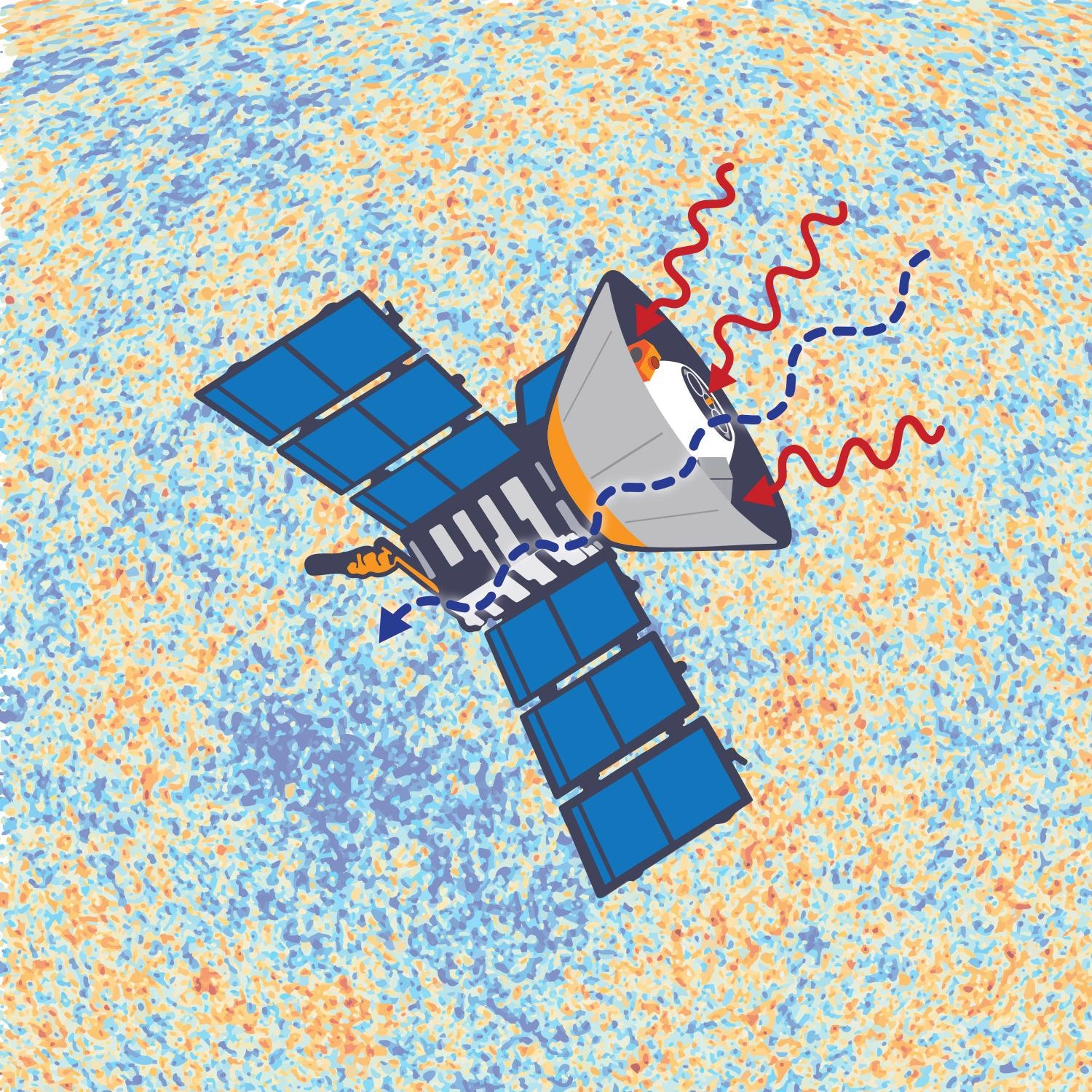According to a new study, an unseen ‘mirror world’ of particles that interacts with the universe solely through gravity might be the key to solving a crucial cosmological issue—the Hubble constant problem.

An artist’s rendition of the COBE Satellite. Image Credit: Matthew Verdolivo, UC, Davis.
The Hubble constant is the current rate of cosmic expansion, but the rate predicted by cosmology’s standard model is far slower than the rate discovered by the most accurate local observations. Many cosmologists have attempted to resolve this difference by altering the present cosmological paradigm.
The objective is to do so without jeopardizing the consistency of standard model predictions with many other cosmological phenomena, such as cosmic microwave background radiation.
The issue that scholars like Francis-Yan Cyr-Racine, assistant professor in the Department of Physics and Astronomy at the University of New Mexico, Fei Ge, and Lloyd Knox at the University of California, Davis, have been seeking to answer is if such a cosmic scenario exists.
Cosmology, according to NASA, is the scientific study of the universe’s large-scale characteristics. Cosmologists investigate topics such as dark matter and dark energy, as well as whether there is only one universe or a multiverse. Cosmology encompasses the entire cosmos, from conception to death, and is full of mysteries and intrigue.
Cyr-Racine, Ge, and Knox have now identified a previously overlooked mathematical characteristic of cosmological models that, in theory, might allow for a quicker expansion rate without affecting the mainstream cosmology model’s most accurately proven other predictions.
Most dimensionless cosmic observables are substantially invariant when gravitational free-fall rates and photon-electron scattering rates are scaled uniformly.
Basically, we point out that a lot of the observations we do in cosmology have an inherent symmetry under rescaling the universe as a whole. This might provide a way to understand why there appears to be a discrepancy between different measurements of the Universe’s expansion rate.
Francis-Yan Cyr-Racine, Assistant Professor, Department of Physics and Astronomy, University of New Mexico
The study was published in Physical Review Letters.
This finding suggests a new way to reconcile measurements of the cosmic microwave background and large-scale structure with high Hubble constant H0 values by discovering a cosmological model in which the scaling transformation can be demonstrated without violating any measurements of values not protected by symmetry.
This effort has paved the way for a novel approach to tackling a difficult challenge. Additional model development might provide uniformity to the two remaining constraints: the inferred primordial deuterium and helium abundances.
Researchers are driven to an incredibly fascinating conclusion if the universe is somehow leveraging this symmetry: there is a mirror universe that is remarkably identical to ours but unseen, except through the gravitational influence on this world.
The “mirror world” dark sector would lead to efficient scaling of gravitational free-fall speeds while maintaining the accurately calculated mean photon density now reported.
“In practice, this scaling symmetry could only be realized by including a mirror world in the model—a parallel universe with new particles that are all copies of known particles. The mirror world idea first arose in the 1990s but has not previously been recognized as a potential solution to the Hubble constant problem”, stated Cyr-Racine.
He further explained, “This might seem crazy at face value, but such mirror worlds have a large physics literature in a completely different context since they can help solve important problem in particle physics. Our work allows us to link, for the first time, this large literature to an important problem in cosmology.”
Researchers are also asking if the Hubble constant gap could be caused in part by measurement mistakes, in addition to looking for missing elements in the present cosmological model.
While this is still a possibility, it is worth noting that the disparity has grown in importance as higher-quality data has been included in the analysis, suggesting that the data is not to be blamed.
According to Cyr-Racine, “It went from two and a half Sigma, to three, and three and a half to four Sigma. By now, we are pretty much at the five-Sigma level. That is the key number which makes this a real problem because you have two measurements of the same thing, which if you have a consistent picture of the universe should just be completely consistent with each other, but they differ by a very statistically significant amount.”
He concluded, “That is the premise here and we have been thinking about what could be causing that and why are these measurements discrepant? So that is a big problem for cosmology. We just don’t seem to understand what the universe is doing today.”
Journal Reference:
Cyr-Racine, F., et al. (2022) Symmetry of Cosmological Observables, a Mirror World Dark Sector, and the Hubble Constant. Physical Review Letters. doi:10.1103/PhysRevLett.128.201301